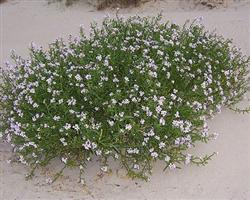Wetlands are slowly but surely shrinking on the world map, dooming thousands of rare species of plants and animals to extinction. In Europe, the phenomenon is particularly visible in the Mediterranean region, and the Black Sea coast. How to save the biodiversity of coastal lagoons and salt pans - a pilot project under the 'Life Plus' program of the EU, which includes three countries - France, Italy and Bulgaria, aims to give an answer to this question.

© Photo: wikipedia.org
Among these countries only Bulgaria has no problems with its salt pans near the Pomorie and Atanasovo lakes as they are still active and maintain a specific variety of animals and plants, accustomed to live in salty environment. In this regard, more work on the project will have environmentalists from the Regional Molentargius-Saline Natural Park in Italy, and the Regional Natural Park "Camargue" in southern France. Many salt pans there are now closed, including the largest in Europe, "Salin de Giraud" in the Camargue. This is a threat to many rare species that originated in them over many years, sometimes centuries of exploitation. Participants in the international project will be looking for a way out of the situation. A pilot project for the management of the Cevia Salts region in Italy will also be developed.
Bulgaria will join its partners in the project "Environmental Management and Preservation in Mediterranean coastal lagoons and salt pans - MC SALT" in respect to marine lagoons, such as the Pomorie Lake, near the city of Burgas. The scope of the project also includes other protected salty areas in participating countries.

The main objective in Bulgaria will be the removal of two invasive plant species, suffocating typical vegetation on dunes near the lake. Dimitar Popov of the "Green Balkans" environmental organization which manages the project in Bulgaria brings us more.
“These are basically two types of shrubs: Amorpha fruticosa and Spartium junceum, which are foreign to our flora. They come from North America and are extremely adaptable. Most often used for strengthening embankments in road construction, they have spread to many other places. In the protected zone "Pomorie Lake" these species spread to sand dunes. Their thick bushes deteriorate several types of dune habitats where they suffocate native vegetation like ammophila arenaria or tamarix tetrandra.”

A great number of plant species grow on the sand dunes. One of these species is

Eryngium maritimum, listed in the Red Book of Bulgaria. One can find the Cakile maritime (European searocket), Crambe maritima , etc. "Pomorie Lake" is the habitat of the largest number of Trachomitum venetum, with its beautiful blue flowers.
The good news is that near Pomorie the development of the invasive species, which have very well developed root system and numerous seeds, is still in a relatively early stage and eradicating them is expected to be successful, Dimitar Popov says.
Another part of the project, which is implemented in Bulgaria, refers to the preservation of rare migratory birds and birds nesting near the lake. Target species are Ferruginous Duck, Kentish Plover, the flamingo and others.
“For the first time within the protected zone "Pomorie Lake" we are building nesting boxes, which are dug into the banks of the lake and create conditions for the breeding of the shelduck, the expert says. This is a duck, which, unlike most other species does not nest in the reeds, but in holes in the ground. Another task is building nesting platforms in the lake for other birds, which are protected by numerous national and international laws.”

Another important aim is the fight against a very serious and global problem affecting the coastal lagoons in the whole Mediterranean region, including the Black Sea. This is the threat of construction and turning the lagoons into urban areas.
English version: Alexander Markov
Phots: wikipedia.org
An unusual opening of the new school year was made by the students and teachers of the Bulgarian school "Asen and Ilia Peikov" in Rome and Florence. The event was attended by the Ambassador of Bulgaria to Italy H.E. Kostadin Kodzhabashev, as well as..
A six-day handicrafts festival in Veliko Tarnovo kicks off the celebrations of Bulgaria's 116th anniversary of independence , reports BNR correspondent Zdravka Maslyankova. More than 80 craftsmen from all over the country will take part in the..
St. Sophia - the church that gave the Bulgarian capital its present-day name - is dwarfed by St. Alexander Nevsky Cathedral , which towers in the centre of the square of the same name. With its white façade, gleaming gold and green domes and beautiful..
Italy to open two migrant processing centers in Albania In October, Italy will open the first of its two migrant processing centers on Albanian..
Veliko Tarnovo hosts the 17 th International Festival of Military Brass Bands, the organizers from the Municipality of Veliko Tarnovo announced. This..
Guests and residents of Sofia will have the opportunity to immerse themselves in the period of Late Antiquity and the reign of Emperor Constantius II,..

+359 2 9336 661
